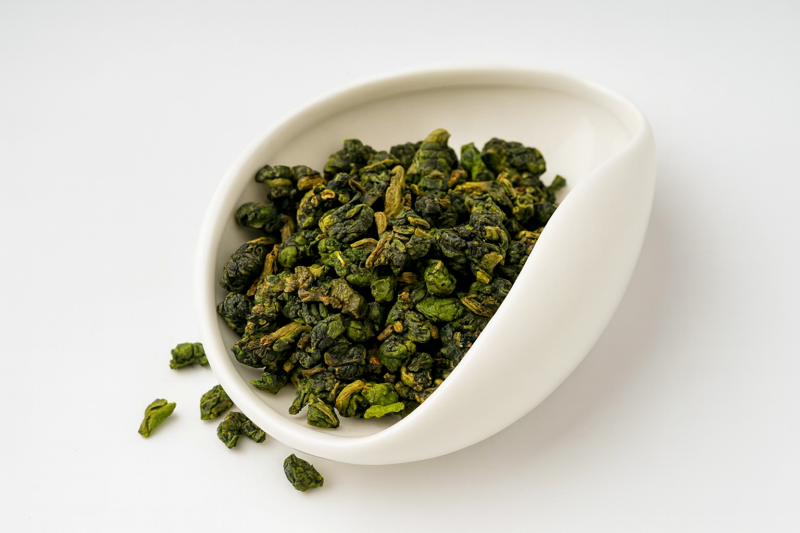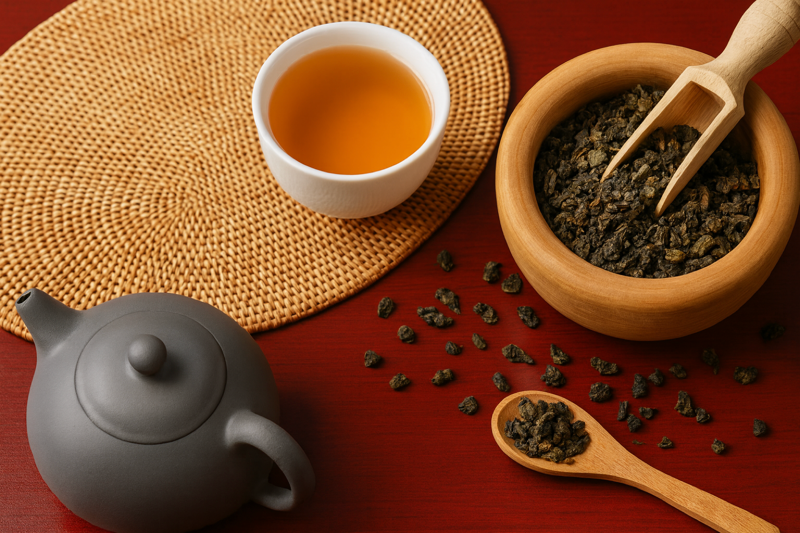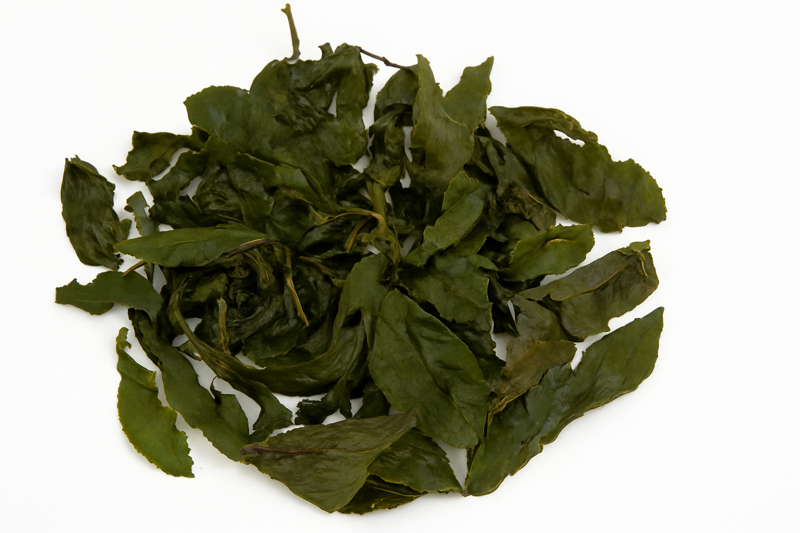Oolong Tea
Floral, fruity, or roasted — a versatile tea of balance and complexity.
- Category: Semi-oxidized tea (Camellia sinensis), typically 10–70% oxidation depending on style.
- Origin: China (Fujian, Guangdong) and Taiwan (notably high mountain teas).
- Harvest: Spring and autumn harvests are most prized, though some regions produce year-round.
- Grade: High Mountain Oolong; Rock Oolong; Tie Guan Yin; Everyday Oolong



Tasting Profile
Brewing Guide
- Tea-to-water ratio~5 g leaves per 200 ml water (or ~1 g per 30 ml in Gongfu brewing).
- Water temperature85–95 °C (185–203 °F), higher for roasted oolong, lower for greener oolong.
- Steeping timeWestern method: 2–4 minutes.; Gongfu method: 20–30 seconds, multiple short infusions.
- Infusions4–7 infusions; lighter oolongs reveal layered florals, darker oolongs deepen with roast and mineral notes.
Background & Story
Oolong tea, also known as Wu Long (“black dragon”), is one of China and Taiwan’s most celebrated teas. It occupies a unique place in the tea spectrum, sitting between green and black tea due to its semi-oxidized nature. Depending on the style, oolong can be as lightly oxidized as 10% or as heavily oxidized as 70%, giving it remarkable diversity in aroma and flavor.
The origins of oolong tea trace back to the Ming and Qing dynasties in China’s Fujian province, particularly the Wuyi Mountains and Anxi County. These regions became famous for producing oolongs that combined floral fragrance with complex roasted depth. The name “black dragon” is thought to refer either to the dark, twisted shape of traditional oolong leaves or to the strength and elegance of the tea itself.
Taiwan later adopted oolong cultivation in the 19th century, and its high mountain regions soon became synonymous with exceptional quality. Taiwanese oolongs, grown in misty elevations above 1,000 meters, developed a reputation for their creamy body, delicate floral notes, and long, lingering aftertaste. Today, Taiwan is globally recognized for producing some of the world’s finest oolongs.
Processing oolong is a skilled craft. Fresh leaves are withered under the sun, gently shaken to bruise the edges, and partially oxidized before being pan-fired to halt oxidation. Rolling, shaping, and sometimes roasting further refine the leaves. This artisanal approach results in teas that range from bright and floral (like Tie Guan Yin, the “Iron Goddess of Mercy”) to dark, mineral-rich, and roasted (like Wuyi Rock Teas).
Oolong has also become central to Chinese Gongfu tea ceremonies, where its layered flavors can be appreciated over multiple infusions. More than just a beverage, oolong represents harmony and balance — a bridge between freshness and depth, tradition and artistry.
Benefits
- Supports metabolism and may aid weight management through polyphenols
- Provides antioxidants that protect against oxidative stress and aging
- Promotes heart health by helping balance cholesterol and blood pressure
- Enhances focus and calm alertness with the synergy of caffeine and L-theanine
- Supports digestion, making it a popular choice after meals
Serving Suggestions
Pairings
- Dim sum dishes such as dumplings, buns, or spring rolls
- Roasted or grilled meats like duck, pork, or chicken
- Stir-fried vegetables with garlic or soy-based sauces
- Light desserts such as almond cookies or sponge cake
- Fresh fruits like lychee, peach, or citrus to complement floral oolongs
Teaware
- Gaiwan (traditional Chinese lidded cup for Gongfu brewing)
- Yixing clay teapot (ideal for roasted or aged oolongs)
- Fairness pitcher (cha hai) for even pouring across multiple infusions
Nutrition Facts
Serving Size: 1 cup brewed Oolong Tea (240 ml)
| Nutrient | Amount per Serving | % Daily Value* |
|---|---|---|
| Calories | 0 | 0% |
| Total Fat | 0 g | 0% |
| Sodium | 0 mg | 0% |
| Total Carbohydrates | 0 g | 0% |
| Protein | 0 g | 0% |
| Vitamin C | 2–4 mg | 3–5% |
| Vitamin A (beta-carotene) | Trace | <1% |
| Calcium | 2–4 mg | <1% |
| Potassium | 20–40 mg | <1% |
| Magnesium | 2–4 mg | 1% |
| Caffeine | 30–50 mg | — |
| L-theanine | 8–12 mg | — |
| Catechins (EGCG) | 20–40 mg | — |
| Polyphenols | 60–100 mg | — |
| Chlorophyll | Present (varies by oxidation) | — |
**Percent Daily Values are based on a 2,000 calorie diet.
† Functional compounds such as caffeine, L-theanine, catechins, polyphenols, and chlorophyll do not have established %DV but contribute to Oolong Tea’s health benefits.